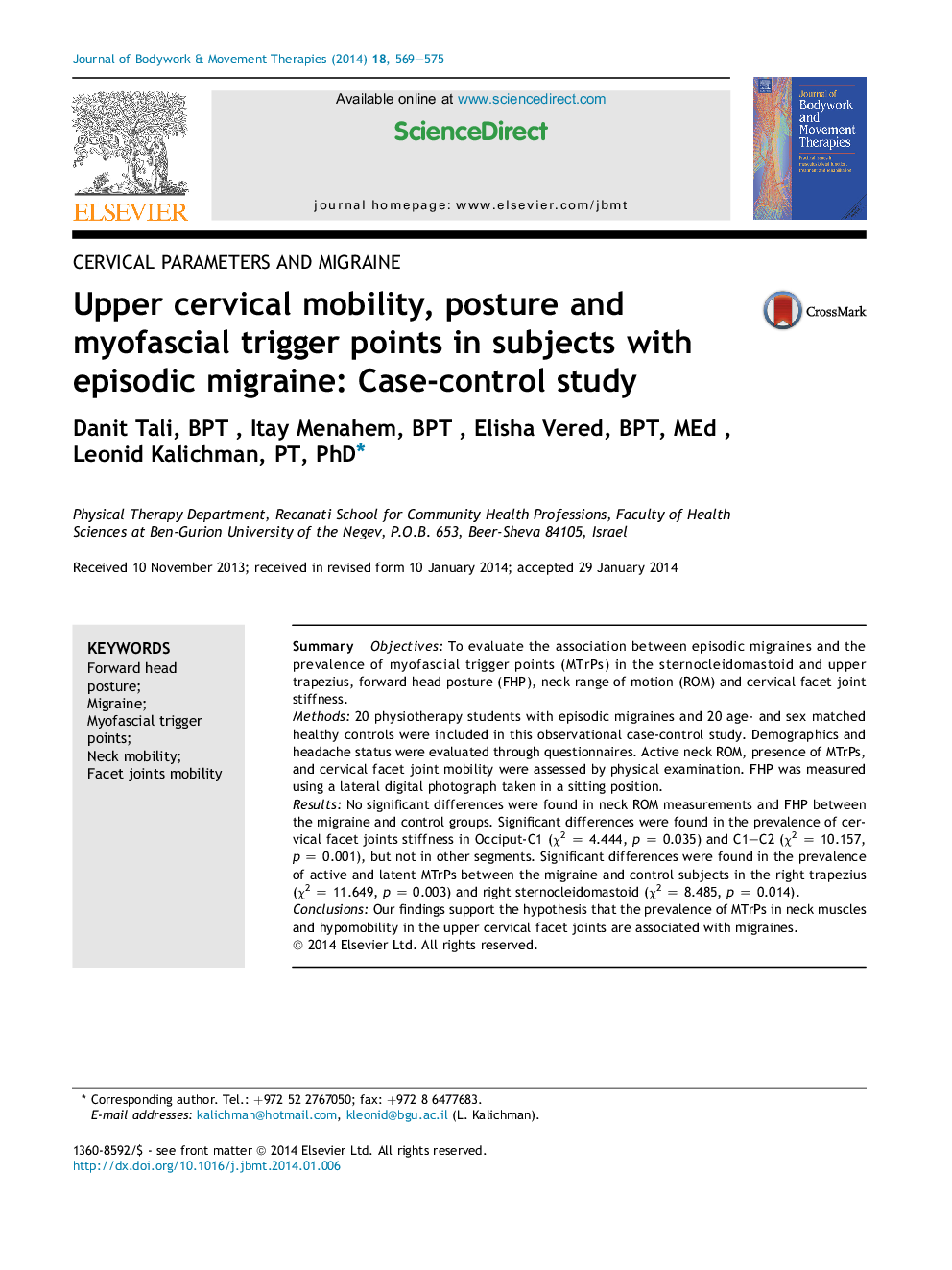| Article ID | Journal | Published Year | Pages | File Type |
|---|---|---|---|---|
| 2619273 | Journal of Bodywork and Movement Therapies | 2014 | 7 Pages |
SummaryObjectivesTo evaluate the association between episodic migraines and the prevalence of myofascial trigger points (MTrPs) in the sternocleidomastoid and upper trapezius, forward head posture (FHP), neck range of motion (ROM) and cervical facet joint stiffness.Methods20 physiotherapy students with episodic migraines and 20 age- and sex matched healthy controls were included in this observational case-control study. Demographics and headache status were evaluated through questionnaires. Active neck ROM, presence of MTrPs, and cervical facet joint mobility were assessed by physical examination. FHP was measured using a lateral digital photograph taken in a sitting position.ResultsNo significant differences were found in neck ROM measurements and FHP between the migraine and control groups. Significant differences were found in the prevalence of cervical facet joints stiffness in Occiput-C1 (χ2 = 4.444, p = 0.035) and C1–C2 (χ2 = 10.157, p = 0.001), but not in other segments. Significant differences were found in the prevalence of active and latent MTrPs between the migraine and control subjects in the right trapezius (χ2 = 11.649, p = 0.003) and right sternocleidomastoid (χ2 = 8.485, p = 0.014).ConclusionsOur findings support the hypothesis that the prevalence of MTrPs in neck muscles and hypomobility in the upper cervical facet joints are associated with migraines.
